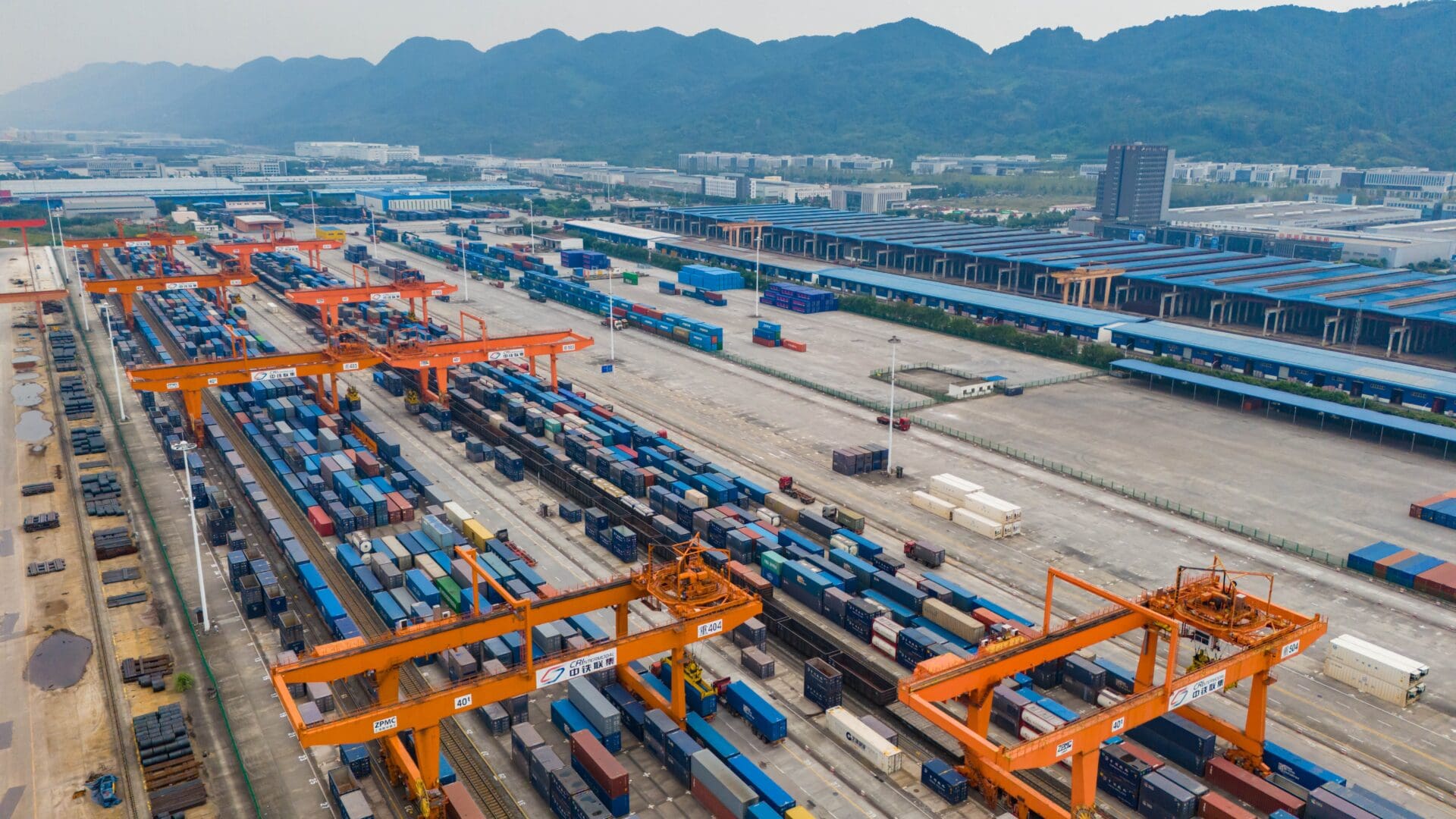On Wednesday of last week the European Union Commission, which is responsible for developing laws for member states and enforcing them, called to step up its efforts to rival China’s Belt and Road Initiative (BRI) with a more targeted approach to global infrastructure investments. The Commission proposed to increase the impact of the EU’s Global Gateway plan, a €300 billion initiative designed to boost the EU’s influence in international markets.
On the same day, Hungarian Minister of Foreign Affairs and Trade Péter Szijjártó met with Chinese Foreign Minister Wang Yi in Beijing. Unsurprisingly, Szijjártó’s appeal was not to counter-balance China’s BRI, but to further implement it in Hungary in order to build up his country’s infrastructure:
‘This opens up the opportunity for us to modernize and develop Hungary’s railway network quickly and efficiently with external financing, which is particularly important now as more investments arrive, more factories are built, and more products are manufactured. The more we can transport by rail, the better we protect our environment and the more efficiently we can utilize our geographical logistical capabilities.’
It has been just over ten years when Chairman Xi Jinping delivered a keynote speech at the third Belt and Road Forum for International Cooperation that launched the ambiguous and promising BRI. It was to span more than 140 countries and export China’s industrial overcapacity, advancing its diplomatic clout and embellishing its global influence, scenically to counter the influence of the United States and other industrialized democracies.
In the years before the pandemic, Chinese companies, particularly construction and engineering firms, hurried to do deals financed with large loans from Chinese banks, which resulted in works, such as roads and rail lines. Many leaders of developing countries gladly accepted China’s willingness to lend with few of the environmental and human rights restrictions that multilateral institutions and Western lenders have long demanded.
A decade later, however, after doling out hundreds of billions of dollars,
Xi’s BRI has plummeted incurring debts that have reluctantly forced the Chinese leader to rethink his signature aid initiative.
BRI Prosperity Short-lived
China’s BRI, notwithstanding large and ambitious efforts to build infrastructure and connectivity throughout emerging markets in Asia, Africa, Europe, and Latin America, has reportedly failed to live up to its lofty ambitions. To make matters worse, Beijing has simultaneously burdened developing economies around the world with substantial debt and insufficiently productive assets.
Chinese lenders have paid depositors far less than they would in a competitive market. In addition, since the COVID-19 pandemic and the Russian invasion of Ukraine roiled global markets, a climbing number of low-income BRI countries have struggled to repay loans associated with the initiative, spurring a wave of debt crises and new criticism for BRI. Projects have been canceled or renegotiated across nearly 50 countries — with significant cancellations compared to pre-BRI years:
- Pakistan, for example, withdrew a $2 billion BRI coal plant;
- Myanmar reduced its BRI spending with a planned $7.3 billion port being downsized to only $1.3 billion amid debt fears;
- Kazakhstan and Bolivia canceled $1.5 billion and $1 billion in projects respectively;
- Italy pulled out altogether last year because, in the words of Prime Minister Georgia Meloni, joining the BRI was a ‘big mistake’.
As a result, such state-directed investment has resulted in gross overbuilding in housing and infrastructure, accompanied by relentlessly declining productivity and soaring debt levels across the economy.
Indeed, said Yun Sun, director of the China program at the Stimson Center:
‘The Chinese did not think through the economic viability of a lot of these loan projects because their priority was [to] glorify BRI, to implement projects to ensure that BRI materializes and is happening all over the world.’
In 2022, for example, 60 per cent of China’s overseas lending went to borrowers in financial distress,
compared to just 5 per cent in 2010, said Bradley Parks, the executive director of the AidData research group at the College of William and Mary.
‘At its peak, it was really looked at as the center piece of China’s economic engagement with the rest of the world’, said Scott Kennedy, an expert in Chinese business and economics at the Center for Strategic and International Studies. Now, he said, it is a ‘shadow of its former self’.
Another factor that created problems for the BRI was a lack of coordination. The Chinese unleashed a cash cow but without a centralized function that would ensure that the funds were properly used.
Marauding Chinese entities, both public and private, partnered with like-minded corrupt officials in borrower nations to propel their own subjective interests, leading to high-profile, low-quality projects that impressed voters and constituents in the short term but often were unneeded, poorly thought out, or defective.
Digital Coercion and Other Concerns
In truth, Xi’s vision for BRI has almost proven to lack foresight. As a result, last October he began to prioritise ‘small yet smart’ projects over the BRI so as to reshape digital governance, that of more government control and mass surveillance.
According to the freedom of speech organization, in its report China: The rise of digital repression in the Indo-Pacific, Chinese national tech champions, including Huawei, ZTE and Alibaba, have been at the forefront of the Digital Silk Road partnerships, and related development assistance projects. The companies, effectively proxies for Communist China, have become the leading technology infrastructure providers in the region, especially when it comes to 5G, submarine fibre-optic cables and satellite systems.
The report highlights the multiple concerns this dominance poses for human rights, including freedom of expression and information, and the right to privacy. In that, it echoes the concerns of local civil society in the region, who fear that, in the hands of authoritarian states, the infrastructure built by Chinese companies can support policy changes to exert greater control over the internet, through mass data gathering, surveillance and censorship.
In its 2023 Country Reports on Human Rights Practices report the US State Department found the CCP to not just have engaged throughout the year in mass corruption, it accused Beijing for committing every single human rights violations in the book: repression of political dissidence, arbitrary or illegal killings and detention, coerced abortions, forced sterilizations, torture of detainees, kidnapping, and genocide against the Muslim Uyghurs and members of other ethnic and religious minority groups in Xinjiang. And, last but not least, the persecution of Christians, Catholics in particular.
It was thought that the BRI, aside enhancing China’s geo-political clout, would have not just boosted trade and growth, it would have also created sustainable development and social stability in the countries involved. On the contrary,
the social impact of large infrastructure projects were are often implemented through human rights violations,
such as restriction of personal freedom, imposing arbitrary fines on workers, withholding of identification documents, the accumulation of wage arrears, threats and use of physical violence to prevent labourers from escaping slave-type conditions or contacting the media or local authorities, and other human rights violations.
Momentum for the BRI, despite countries, like Hungary that saliently welcome it, has stalled without an institutionalized framework. Given its opaque and ad hoc nature of governance, the BRI will possibly fall short of creating the intended system-transforming multilateral institution.
As the world’s largest bilateral lender, China faces challenges dealing with the debt distress of some borrowers under the BRI. In total, the BRI has cost Beijing has an estimated $1 trillion, and according to experts expenses over the life of the BRI could reach as much as $8 trillion, though estimates vary.
China has yet been able to deal equitably with unsustainable debt, or rather, it has not figured out how to successfully restructure this debt when it becomes untenable. Poor funding decisions and uneven quality control over project constructions, have also lent support to criticism that BRI is nothing other than a Chinese scheme of neo-colonialism, debt traps, and global domination. In addition, given China’s failure to add meaningful protections for human rights, environmental risk, or worker safety, as well as, an absence of anti-corruption safeguards that contributed to projects being overloaded with payoffs and kickbacks to rapacious individuals, the BRI could be for participating counties more counterproductive than imagined.








